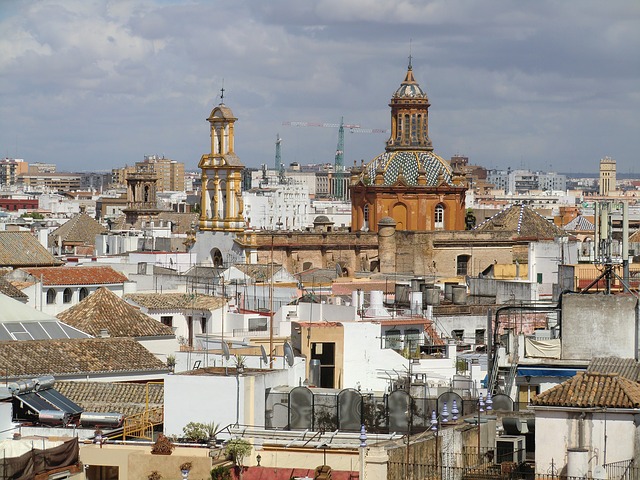Almansa – Spain’s Shoemaking Capital 15th March 2016

Rising from a charming, irrigated plain at the foot of an imposing limestone crag, the town of Almansa can lay claim to being Spain’s shoemaking capital.
Until the 16th century the town’s shoemaking “industry” consisted mainly of small artisans working from home-workshops and producing shoes purely for use in the immediate area. There will have been a single “master” in each of these workshops, and one or two apprentices. Gradually, with improvements in transport, it became possible for these artisans to sell their products in more distant towns and this led to an accumulation of enough capital to start the area’s first factories. The town’s location between Madrid and Alicante and Valencia gave it an edge in this nascent shoemaking industry (very similar to one of the reasons for England’s equivalent, Northampton, becoming the shoemaking capital), as did the existing shoemaking heritage and also the presence of a large number of experienced muleteers, who were instrumental in transporting the towns goods to markets near and far.
Also of importance was a local family, the Colomas. This family was one of several that transitioned from being simple shoemakers to pioneers of industry. By 1904 the town, partly due to the efforts of the Coloma family, was producing around 87,000 pairs of shoes a year, and by 1906 this had exploded into about 1.3 million pairs each year!
Despite these high numbers, the town’s shoe production was overwhelmingly geared toward the domestic Spanish market until the First World War, at which point focus was switched to producing military boots, most of which were shipped to France. Although Spain’s military did not participate in the First World War, its status as a neutral power allowed Spanish companies to trade with France throughout the conflict. The Coloma family’s output alone increased by 75% between 1913 and the war’s end in 1918.
During this time, mechanisation proceeded at a breakneck pace, and after the war Almansa continued to export many of its shoes to France, fuelling further growth. But, despite the town having prospered during the First World War, the Spanish Civil War was quite different, and the upheaval of the times caused the local shoemaking industry into a steep decline. Large emigration from the area resulted, taking away valuable shoemaking skills and experience.
As Spain lay slumbering during the Second World War, licking the wounds caused by its own recently-ended civil war, the town began to pick itself up, slowly but surely. By 1955 the shoemaking industry in the area was truly alive once more, and new manufacturing techniques once again boosted production. The town’s fortunes once again took a dive, however, with the economic difficulties of the 1970s and the emergence of easily-available cheap labour from the developing world. However, Spanish membership of the European Union in 1985 following General Franco’s death gave the town a new lease of life once more, with tariff-free access to European markets now becoming available.
The town’s shoemaking industry’s fortunes continued to yo-yo throughout the 1990s and early 21st century, with various global downturns and economic upheavals effecting prosperity. The modern shoemaking industry in Almansa is smaller than previously, but solid: a new equilibrium has been reached.
John Spencer Shoes
The John Spencer brand has its origins in England, of course, but the shoes are now all made in a factory in Almansa. Having been out to visit the factory we were very impressed. Many of the machines used had been imported from the UK. Those of you who have bought John Spencer from us will agree they make very fine Goodyear-welted shoes. There has a been a hiatus in the production of their shoes but we are pleased to announce that we expect them to be back in production and available again later this year.
If you enjoyed this article - please share with your friends...
